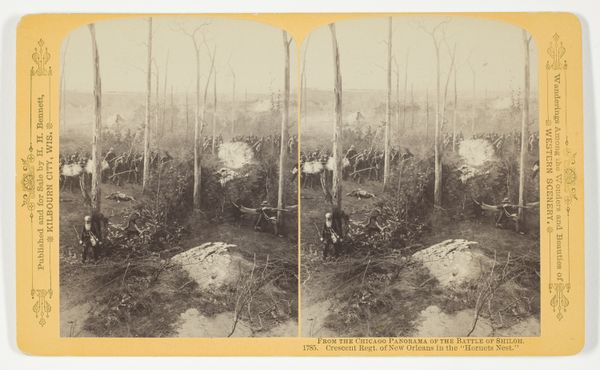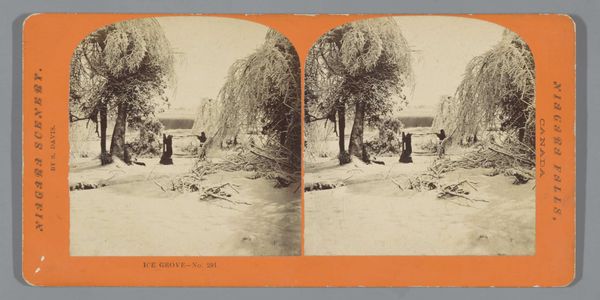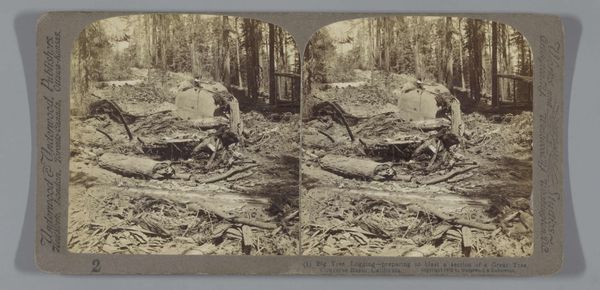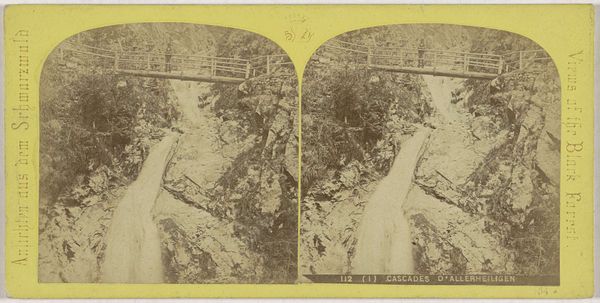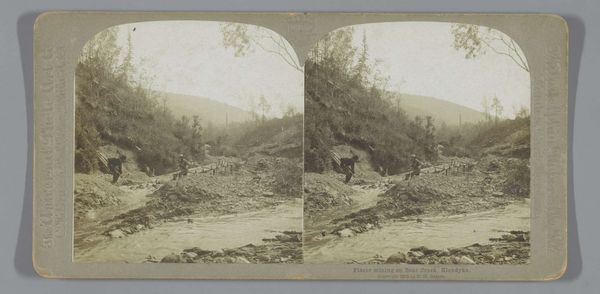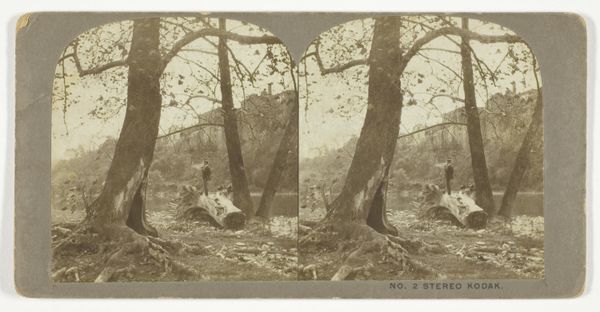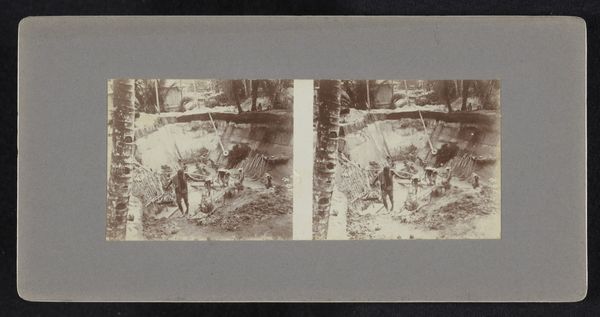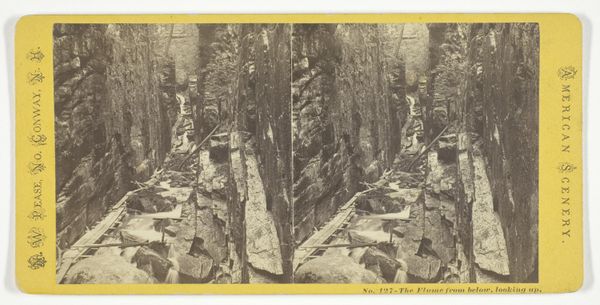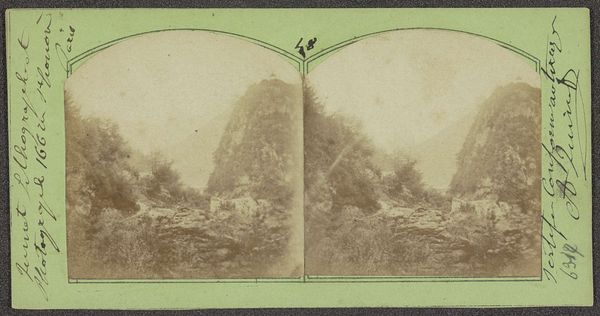
Dimensions: height 85 mm, width 170 mm
Copyright: Rijks Museum: Open Domain
This stereograph, likely made by E. Soule, shows the Rue d’Enfer near Luchon. The photographic process itself is fascinating, involving the careful application of light-sensitive chemicals to a glass plate negative. The resulting albumen print on paper gives a sepia tone to the image, highlighting the rugged texture of the rock formations. But the real magic happens with the stereoscope. By presenting two slightly different perspectives to each eye, the photo transforms into a three-dimensional scene. This technique offered viewers a virtual experience, democratizing access to distant places. The popularity of stereographs in the 19th century reflects the rise of mass tourism and the desire to explore the world from the comfort of one's home. The image speaks to the power of technology to shape our perception and understanding of the world. It reminds us that even the most seemingly straightforward representations are mediated by materials, processes, and social contexts.
Comments
No comments
Be the first to comment and join the conversation on the ultimate creative platform.



